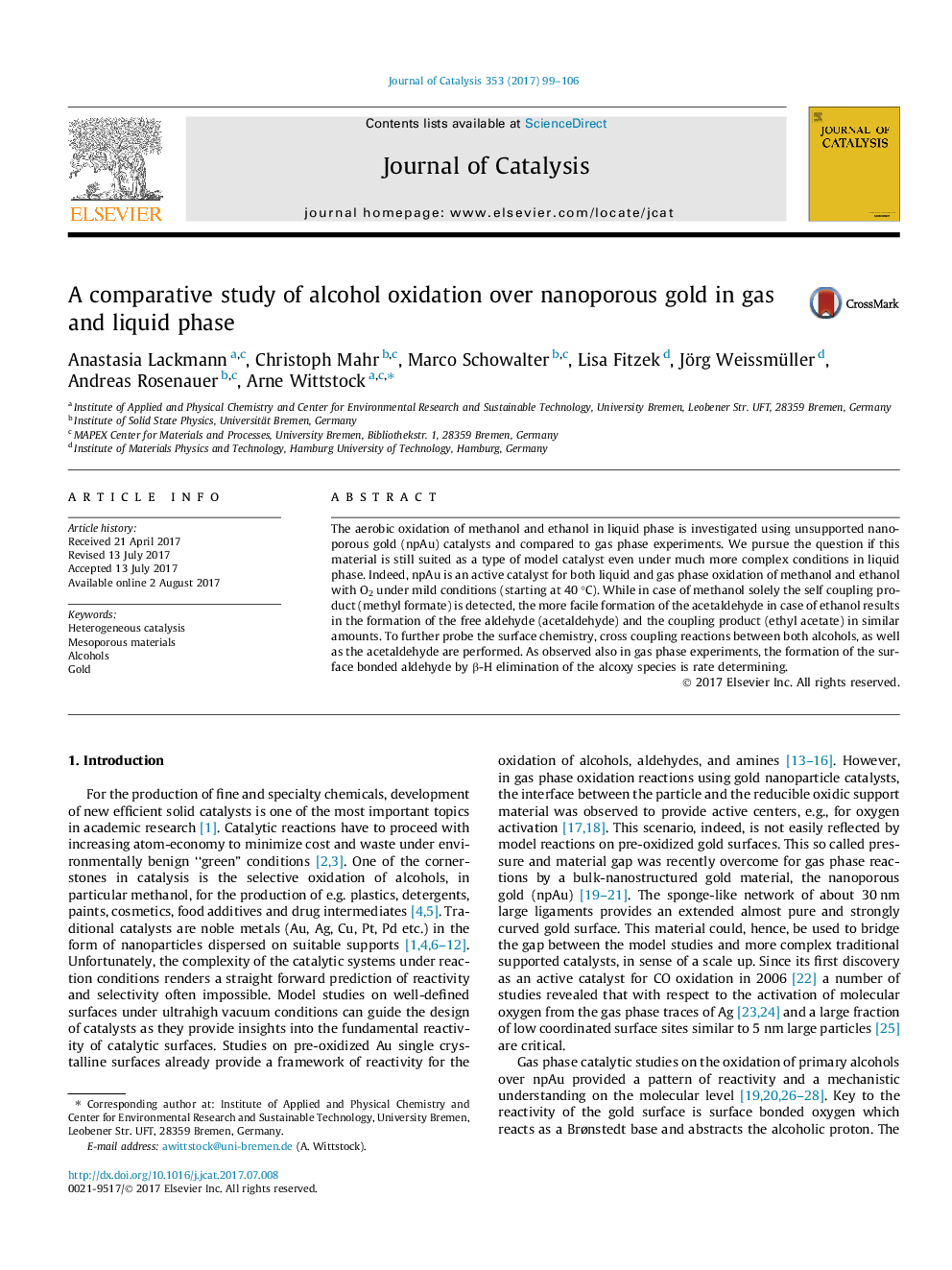| Article ID | Journal | Published Year | Pages | File Type |
|---|---|---|---|---|
| 6455555 | Journal of Catalysis | 2017 | 8 Pages |
â¢Aerobic oxidation of methanol and ethanol in liquid and gas phase already at 40 °C.â¢High activity due to low coordinated Au surface sites (â¼25%).â¢In the absence of a support molecular transformations in line with surface chemistry of Au.â¢Molecular transformations can be anticipated based on model experiments.
The aerobic oxidation of methanol and ethanol in liquid phase is investigated using unsupported nanoporous gold (npAu) catalysts and compared to gas phase experiments. We pursue the question if this material is still suited as a type of model catalyst even under much more complex conditions in liquid phase. Indeed, npAu is an active catalyst for both liquid and gas phase oxidation of methanol and ethanol with O2 under mild conditions (starting at 40 °C). While in case of methanol solely the self coupling product (methyl formate) is detected, the more facile formation of the acetaldehyde in case of ethanol results in the formation of the free aldehyde (acetaldehyde) and the coupling product (ethyl acetate) in similar amounts. To further probe the surface chemistry, cross coupling reactions between both alcohols, as well as the acetaldehyde are performed. As observed also in gas phase experiments, the formation of the surface bonded aldehyde by β-H elimination of the alcoxy species is rate determining.
Graphical abstractUnsupported nanoporous gold provides an extended and strongly curved surface suitable studying the surface chemistry and reactivity under applied conditions. While the selectivity of the catalysed reaction is determined by the β-H elimination the large fraction of low coordinated Au atoms provide reactivity.Download high-res image (48KB)Download full-size image
